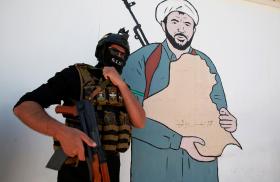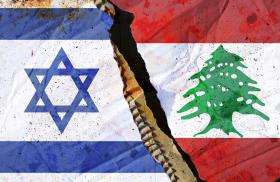On August 19, Iranian president Mahmoud Ahmadinezhad submitted his list of cabinet nominees to the Majlis (Iran's parliament). The president's choice of individuals clearly shows his preference for loyalty over efficiency, as he fired every minister who, while strongly supportive of him on most issues, opposed him recently on his controversial decision to appoint a family relative as first vice president. Ahmadinezhad's drive to install loyalists involves placing members of the military and intelligence community in the cabinet, as well as in other important government positions. Despite the president's positioning, Iran's top leader, Ayatollah Ali Khamenei, remains in firm control of the country's vital ministries.
Cabinet Approval
On August 23, the Majlis will either approve or challenge the president's cabinet appointments. Ahmadinezhad has a relatively free hand to choose the majority of cabinet seats, but the country's key ministries -- intelligence, interior, foreign affairs, defense, and culture and Islamic guidance -- are, in all practical terms, preapproved by Khamenei before the president submits their names. As such, the Majlis is all but guaranteed to accept these particular individuals. The president is also empowered to directly appoint the secretary of the Supreme Council for National Security (SCNS) -- the individual responsible for Iran's nuclear dossier and negotiations -- but because this position is of particular importance to Khamanei, it also must be preapproved.
Economic and Foreign Affairs
Ahmadinezhad's nominations suggest that he is not bothered by the ongoing criticism of his foreign policy and economic agenda, since the ministers of foreign affairs, industries and mines, economic affairs, cooperatives, and roads and transport will remain unchanged. Masoud Mir Kazemi, previously the oil minister, is the president's choice to become minister of commerce. Ahmadinezhad is also expected to reappoint Said Jalili as secretary of the SCNS -- a development that seemingly dims hope for a change in Iran's nuclear strategy.
IRGC in Charge of Internal Affairs
Mohammad Ali Jafari, the commander-in-chief of the Islamic Revolutionary Guard Corps (IRGC), said recently, "There was a perception that confronting hard threats was the top priority, but after careful study, we came to the conclusion that it was the IRGC's duty to confront the regime's soft threats, including cultural, economic, political, and social ones." Ahmadinezhad's first presidential term was characterized by the ascendance of the IRGC into Iran's political system. Considering the makeup of the president's new cabinet nominees, this trend -- backed by Jafari's suggestion that the IRGC should take over crucial political and cultural government positions -- will continue into Ahmadinezhad's second term:
Interior minister. Sadeq Mahsouli, the outgoing interior minister, was not renominated. Known as a "billionaire IRGC general," Mahsouli was the main Iranian official responsible for the controversial presidential election in June. By replacing him, Ahmadinezhad may be trying to prevent further Majlis discussion of the election, since there would be considerable debate about the minister's record. The president was likely also dissatisfied with Mahsouli's handling of the election, with the widespread allegations of fraud and popular street demonstrations. The man nominated to succeed him, Mustafa Mohammad Najjar -- a career IRGC man -- was Ahmadinezhad's defense minister for four years and has a close relationship with Khamenei.
Culture and Islamic guidance minister. Mohammad Hosseini comes from the intelligence community, and if confirmed by the Majlis, he can be counted on to follow his predecessor, Mohammad Hossein Saffar Harandi, in putting restrictions on publication houses, the press, the movie industry, and the arts in general.
Oil minister. Masoud Mir Kazemi was the head of IRGC Center for Fundamental Studies for many years.
Defense minister. Brig. Gen. Ahmad Vahidi is connected to Iran's Qods Force, and he, along with Mohsen Rezai, former IRGC commander-in-chief, and Ali Fallahian, former intelligence minister, is wanted by Interpol for involvement in the 1994 bombing of a Jewish center in Argentina.
Intelligence minister. Heydar Muslehi is a cleric who was Khamenei's representative in the IRGC and Basij militia, and was the head of Endowment and Charity Organization. He was trained in the Imam Khomeini Institute for Education and Research, which is run by Mohammad Taghi Mesbah Yazdi, a radical cleric in Qom. In a recent speech to Basij members, Mesbah Yazdi, who is known for his support for Ahmadinezhad, stated that "obedience to the president is obedience to the Hidden Imam and God." Despite Muslehi's inexperience in the intelligence business, the Majlis is not likely to question Ahmadinezhad's decision, since Muslehi was presumably preapproved by Khamenei.
Gap Widens Between Clerics and Ahmadinezhad
Ahmadinezhad considers himself an authentic representative of pure Islamic ideology, one that has no need for clerical guidance on political issues. As such, the relationship between Ahmadinezhad and Iran's clerical establishment has soured over the years -- though not so with Khamenei, who is more of a politician than a cleric.
Ahmadinezhad's nomination of three women to his cabinet -- for the ministries of health, education, and welfare and social security -- could exacerbate these tensions. Many members of the Majlis consider these female nominees unqualified, and many conservative clerics in Qom, such as Ayatollah Lotfollah Safi, see the move as a violation of Islamic law.
A major episode that revealed the depth of the clerical-Ahmadinezhad split was the president's unconditional support of Rahim Mashai, who is closely related to Ahmadinezhad by marriage. Mashai drew the ire of the conservatives when he said that Iran has no quarrel with the people of Israel, even though it may dislike the state of Israel. In the last weeks of his first term, Ahmadinezhad appointed Mashai, then director of the Cultural Heritage Organization, as his first vice president. Facing unprecedented clerical and conservative pressure -- and the opposition of many previous cabinet members -- Ahmadinezhad did not reverse his decision until Khamenei intervened and forced him to do so. The president then appointed Mashai as his chief of staff, the head of the president's office. In addition to his statements on Israel, the clerical establishment dislikes Mashai because he, along with Ahmadinezhad, believes in the imminent return of the Mahdi (the Twelfth Imam) -- an event that would make the clergy superfluous.
Conclusion
Ahmadinezhad's list of cabinet nominees reveals his self-confidence and readiness to be challenged by the predominately conservative Majlis. Leading Majlis figures have already expressed concern about Ahmadinezhad's potential nominees, but the president ignored their objections. Reportedly, he believes that since he received more votes than all the Majlis members combined, he should not have to compromise with them. Ahamdinezhad's new cabinet nominees are also the result of unofficial coordination with Khamenei. Although the Majlis will likely disagree with some of Ahmadinezhad's selections, the president's first-term policies will essentially continue into his second term, as evidenced by the same people occupying key ministries -- with Khamenei's approval -- and the increasing number of IRGC and intelligence personnel taking top government positions.
Mehdi Khalaji is a senior fellow at The Washington Institute, focusing on Iranian politics and the politics of Shiite groups in the Middle East.
Policy #1571


